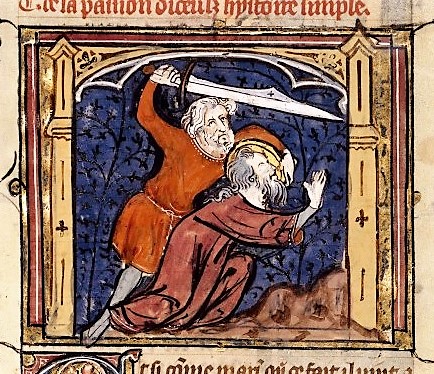 Last updated: February 7, 2024
Last updated: February 7, 2024
I’m always fascinated about how certain holidays come into being and what their roots are, before they end up being commercialized and trivialized into oblivion, a shadow of what was intended originally. So what’s up with Valentine’s Day? You might have an idea that it is associated with a Saint Valentine, and you would be right. The feast days of saints are often holy-days that are celebrated annually on the anniversaries of their deaths. So here’s how Saint Valentine’s life and martyrdom led us to associate it with romantic love and how it morphed so that now we give red roses and/or chocolates and Valentine’s Day cards to our sweeties every February 14.
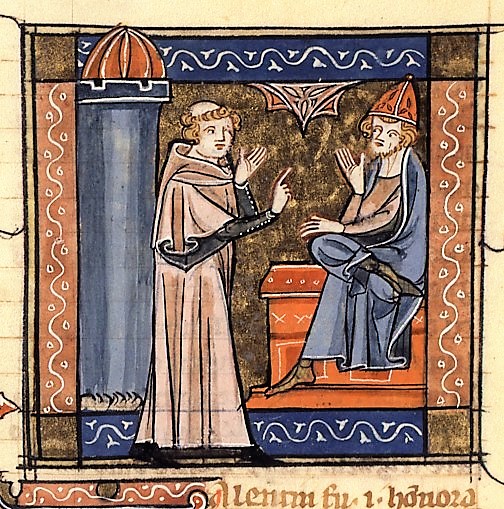 The first interesting thing is that it turns out that there are multiple Saint Valentines. There are two Valentines who were martyred in Rome back in the third century. The first Valentine of Rome was a priest who is thought to have been beheaded in 269 ce., during the reign of Emperor Claudius II Gothicus (ruled 268-270 ce.) and who was buried on the Via Flaminia. The second Valentine, the bishop of Terni in Umbria, Italy, is said to have been martyred during persecution in 273 ce. under the reign of Emperor Aurelian (ruled 270-275 ce.) This Valentine is also buried on the Via Flaminia and has the same February 14 feast day that was added to the calendar of saints by Pope Gelasius I in 496 ce. Because there are so many similarities, it’s possible that these two Valentines were actually the same person. In addition there is a third Valentine who was martyred in North Africa, someone we know even less about, and who is not thought to be connected to Valentine’s Day. Beyond these bare-bone details, all that is left is the stuff of legends.
The first interesting thing is that it turns out that there are multiple Saint Valentines. There are two Valentines who were martyred in Rome back in the third century. The first Valentine of Rome was a priest who is thought to have been beheaded in 269 ce., during the reign of Emperor Claudius II Gothicus (ruled 268-270 ce.) and who was buried on the Via Flaminia. The second Valentine, the bishop of Terni in Umbria, Italy, is said to have been martyred during persecution in 273 ce. under the reign of Emperor Aurelian (ruled 270-275 ce.) This Valentine is also buried on the Via Flaminia and has the same February 14 feast day that was added to the calendar of saints by Pope Gelasius I in 496 ce. Because there are so many similarities, it’s possible that these two Valentines were actually the same person. In addition there is a third Valentine who was martyred in North Africa, someone we know even less about, and who is not thought to be connected to Valentine’s Day. Beyond these bare-bone details, all that is left is the stuff of legends.
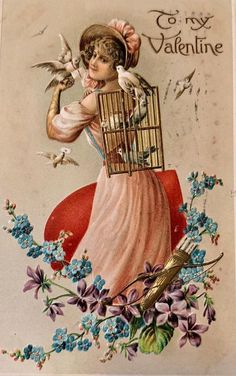 One piece of today’s celebration of Valentine’s Day that is somewhat related to these historical martyrdoms is connected to the color red. Red is the color of blood, the color of martyrdom that has come down to us as the red hearts and red roses that are so ubiquitous on our Valentine’s cards. It is also the reason priests wear red vestments when saying Mass on the feast days of martyrs and why the Pope and Cardinals of the Catholic Church wear red as part of their everyday clothing.
One piece of today’s celebration of Valentine’s Day that is somewhat related to these historical martyrdoms is connected to the color red. Red is the color of blood, the color of martyrdom that has come down to us as the red hearts and red roses that are so ubiquitous on our Valentine’s cards. It is also the reason priests wear red vestments when saying Mass on the feast days of martyrs and why the Pope and Cardinals of the Catholic Church wear red as part of their everyday clothing.
The legends surrounding Saint Valentine were described in later manuscripts, including Bede’s martyrology in the 8th century, the Golden Legend from the 13th century, and the Nuremburg Chronicle from the 15th century. Also, according to legend, it is said that Saint Valentine cured Julia, daughter of his jailer Asterius, of her blindness. Because of this, Julia, her father, and forty-six members of their household (family members and servants) came to believe in Jesus and were baptized. One legend even claims that Saint Valentine sent a card (the first Valentine) to Julia on the night before he was executed, signing it “Your Valentine.”
Another legend claims that Saint Valentine performed clandestine weddings for Roman soldiers who were Christian and not allowed to marry. According to one story, he cut hearts from parchment “to remind these men of their vows and God’s love.” Other than this, there does not appear to be any direct information that would connect St. Valentine with romance.
It seems that the first romantic association may be attributed to the medieval author Geoffrey Chaucer (circa 1343-1400 ce.) on the occasion of the first anniversary of the marriage of King Richard II of England and Anne of Bohemia. In his 1382 poem “Parlement of Foules,” Chaucer draws a connection between courting birds and Valentine’s Day 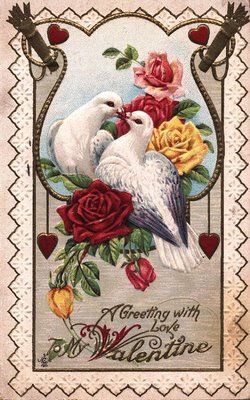 that highlights Nature convening a parliament at which the birds choose their mates. Translated from Old English, Chaucer wrote:
that highlights Nature convening a parliament at which the birds choose their mates. Translated from Old English, Chaucer wrote:
And in a clearing on a hill of flowers/Was set this noble goddess, Nature/Of branches were her halls and her bowers/Wrought according to her art and measure/Nor was there any fowl she does engender/That was not seen there in her presence/To hear her judgement, and give audience.
For this was on Saint Valentine’s day/When every fowl comes there his mate to take/Of every species that men know, I say/And then so huge a crowd did they make/That earth and sea, and tree, and every lake/Was so full, that there was scarcely space/For me to stand, so full was all the place.
Geoffrey Chaucer (1382)
The earliest description of February 14 as an annual celebration of courtly love appears in the Charter of the Court of Love. This document was supposedly written by Charles VI of France at Mantes-la-Jolie in 1400. It describes lavish festivities that were attended by members of the royal court and that included a feast, accompanied by amorous song and poetry competitions, jousting, and dancing.
However, it wasn’t until the 19th century before the sentimentality of Valentine’s Day originated in the United Kingdom and became commonplace in a more modern way. Originally, Valentine’s Day cards were handmade with real lace and ribbons, but as demand increased, printers developed “mechanical valentines” and by the middle of the century, paper Valentines began to be mass-produced. Even though postage was expensive at the time, it is estimated that 60,000 Valentines were sent in the U.K. in 1835, increasing to 400,000 by 1840, when postal reforms were implemented and the postage stamp was invented. Also, in 1868, the British company Cadbury introduced a Valentine’s “Fancy Box,” a decorated box of chocolates in the shape of a heart for Valentine’s Day. These chocolates quickly became associated with the holiday.
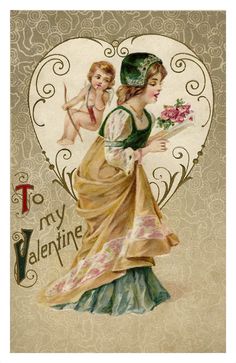 In the United States, Esther Howland (1828–1904) of Worcester, Massachusetts was enamored by a British Valentine’s Day card she received from one of her father’s business associates, not long after graduating from Mount Holyoke College. In cooperation with her father, who owned a large book and stationery store, Howland began a business of making Valentines using paper and lace decorations imported from England. Her valentine cards became very well regarded in the United States. After her death, Howland became known as the “Mother of the American Valentine.” Today Valentine’s Day cards are mass-produced, and it is estimated that around 190 million valentines are sent each year in the US.
In the United States, Esther Howland (1828–1904) of Worcester, Massachusetts was enamored by a British Valentine’s Day card she received from one of her father’s business associates, not long after graduating from Mount Holyoke College. In cooperation with her father, who owned a large book and stationery store, Howland began a business of making Valentines using paper and lace decorations imported from England. Her valentine cards became very well regarded in the United States. After her death, Howland became known as the “Mother of the American Valentine.” Today Valentine’s Day cards are mass-produced, and it is estimated that around 190 million valentines are sent each year in the US.
Happy Valentine’s Day everyone!
UPDATE: On Februrary 7, 2024, the links in this blog post were verified and minor editorial changes were made.
Reference 1: Margaret Duffy, “The Saint of Romance? (with addendum,)” blogpost February 14, 2012, https://imaginemdei.blogspot.com/search?q=valentines+day.
Reference 2: Chaucer, Geoffrey. The Parlement of Foules, lines 309-311 translated by A. S. Kline, 2007, located at: https://poetryintranslation.com/PITBR/English/Fowls.php. See also: http://en.wikipedia.org/wiki/Parlement_of_Foules
Reference 3: The Golden Legend or Lives of the Saints. Compiled by Jacobus de Voragine, Archbishop of Genoa, 1275. First Edition Published 1470. Englished by William Caxton, First Edition 1483, Edited by F.S. Ellis, Temple Classics, 1900 (Reprinted 1922, 1931.), Vol. III at http://www.fordham.edu/halsall/basis/goldenlegend/GoldenLegend-Volume3.asp#Valentine.
Reference 4: Kae Lani Palmisano, “A Brief History of the Valentine’s Day Chocolate Box,” USA Today, Feburary 9, 2021.
Image 1: “Martyrdom of St. Valentine,” from Speculum Historiale of Vincentius Bellovacensis, Paris, Bibliotheque Nationale de France, MS Arsenal 5080, fol. 197, circa 1335.
Image 2: Richard de Montbason, “Martyrdom of St. Valentine,” from Golden Legend of Jacobus de Voragine, Paris, Bibliotheque Nationale de France, MS Francais 241, fol. 69, 1348.
Image 3: Pinterest Image, Rick’s Vintage Plus, Embossed Valentines Day Postcard, Early Divided Back Era (1907-1914,) Museum Souvenir Post Card Co., New York, printed in Germany.
Image 4: The Vintage Bag Lady, http://cheneybaglady.blogspot.com/2012/01/free-valentine-graphics.html.
Image 5: Joe Haupt, Generic (CC BY-SA 2.0,) flickr.com, January 9, 2020.















6 Comments
Leave your reply.